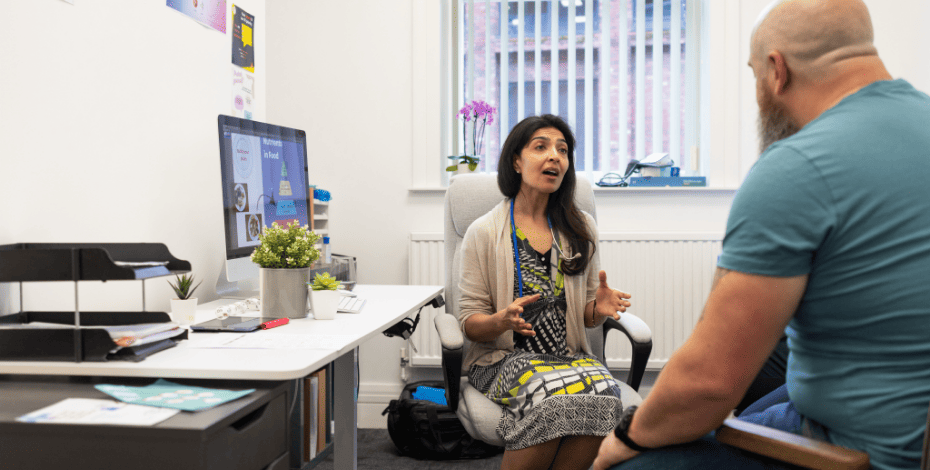
Quadriceps weakness after total knee replacement

One of the Physiotherapy Research Foundation recipients opens up about their research.
Wei-Ju Chang wants to know why—why people who undergo a total knee joint replacement experience weakness in the quadriceps despite intensive physiotherapy rehabilitation.
Why, despite improvement in function, around 20–30 per cent of these people still have ongoing pain and weakness in the thigh muscle.
He says that research has shown that quadriceps weakness after total knee replacement results predominantly from impaired central activation, yet the neurophysiological mechanisms underlying this impairment remain unclear.
To help him find the answers, Wei-Ju was awarded $9511 through a Physiotherapy Research Foundation (PRF) Seeding Grant late last year for his project, ‘Why does quadriceps weakness persist after total knee replacement? An investigation of neuroplastic mechanisms’.
Wei-Ju says the aim of this observational study is to examine neuroplasticity and its association with quadriceps weakness, pain and function, before and after total knee replacement.
‘I will look at how the brain changes, using transcranial magnetic stimulation. I’ll map the primary motor cortex, the part of the brain that controls the quadriceps muscle and also muscle strength.’
Although acknowledging the study’s small sample size, Wei-Ju is aiming for this project to provide preliminary data that will inform a larger longitudinal trial to get a clearer picture of the relationship between primary motor cortex plasticity and quadriceps weakness following total knee replacement.
‘I hope the data from this study gives us a better idea of what’s going on with muscle weakness after this particular surgery,’ he says.
‘We only have 15 people [in the trial] so the idea is to hopefully get a larger grant in the future to run a larger trial to see, for example, whether some features of the brain changes might predict poor outcomes after total knee replacement.’
Wei-Ju, who received his PhD last year, began studying forestry before deciding it wasn’t for him.
After the realisation that his passion was interacting with people to positively impact their health, he switched to physiotherapy and graduated from National Taiwan University in 1998.
‘After I graduated I worked in a major teaching hospital in Taipei for five years,’ he says.
‘Then I came to Adelaide to do my Master of Orthopaedic, Sports and Manual Physiotherapy at the University of South Australia. I decided to stay and work in Australia and I moved to Sydney not long after I finished my master’s.’
Now a postdoctoral research fellow at Neuroscience Research Australia, Wei-Ju splits his working hours between conducting research and clinical practice.
His initial foray into research came after finishing his master’s, through some minor involvement in clinical trials from time to time, but his desire to become more knowledgeable about chronic pain—his area of interest in private practice—led to further study.
‘I realised I didn’t know enough about pain and when I looked into the literature there was not enough there to tell me why some people recover while other people’s pain persists for months or years after injury. So then I started thinking about doing research,’ he says.
This eventually led to a PhD scholarship, allowing Wei-Ju to undertake a project exploring the mechanism of how pain transitions from acute to chronic, particularly in the lower back.
‘That’s how I got into research.’
Despite having just commenced as a career researcher, he understands the competitive funding landscape that he now operates within.
‘I’m a member of the APA so I know about the PRF Seeding Grant, particularly how it can support early-career researchers like myself.
'I think my research is quite relevant to physio clinical practice and is an area that can provide benefits in terms of helping our professional standing in the rehab area,’ he says.
‘The understanding and acknowledgement in this area can potentially have a positive impact on how we practise in the future, and the direct influence is the knowledge that we can gain.
'I think it aligns with what the PRF Seeding Grants are about, so I decided to apply.’
Given the complementarity of his neuroscience research and strong clinical background and his passion for evidence-informed clinical practice, Wei-Ju is hopeful the implications of his research will influence treatment and the provision of exercise rehabilitation after the surgery.
‘In the longer term, the knowledge generated from this project has the potential to assist clinical decision-making in treating quadriceps weakness and to advance the development of new treatments that utilise multimodal techniques—for example non-invasive brain stimulation, peripheral electrical stimulation, exercise—to target neuroplasticity in knee osteoarthritis and total knee replacement.’
>> Thanks to member donations, the PRF can support researchers such as Wei-Ju. Click here to find out more.
GRANTS REVIEW COMMITTEE NOMINATIONS CLOSING SOON
Time is running out to nominate for one of the four vacancies on the the Physiotherapy Research Foundation (PRF) Grants Review Committee (GRC). Nominations close Thursday, 15 October 2020.
The primary role of the GRC is to review the merits of applications for research grants submitted to the PRF, and to make recommendations on grant allocations for the consideration to the PRF Committee.
To be eligible to join the GRC you must be a current financial member of the APA, hold a postgraduate qualification and have experience in conducting, supervising and/or reviewing research relating to physiotherapy.
Members with cardiorespiratory and musculoskeletal skills and experience are strongly encouraged to apply.
Contact Jenine Fleming, PRF Administration Officer, at jenine.fleming@australian.physio for a nomination form or for more details.
© Copyright 2025 by Australian Physiotherapy Association. All rights reserved.





